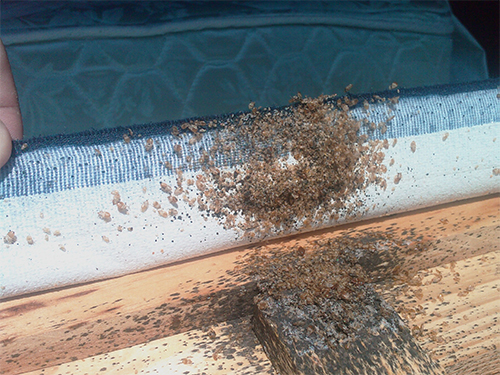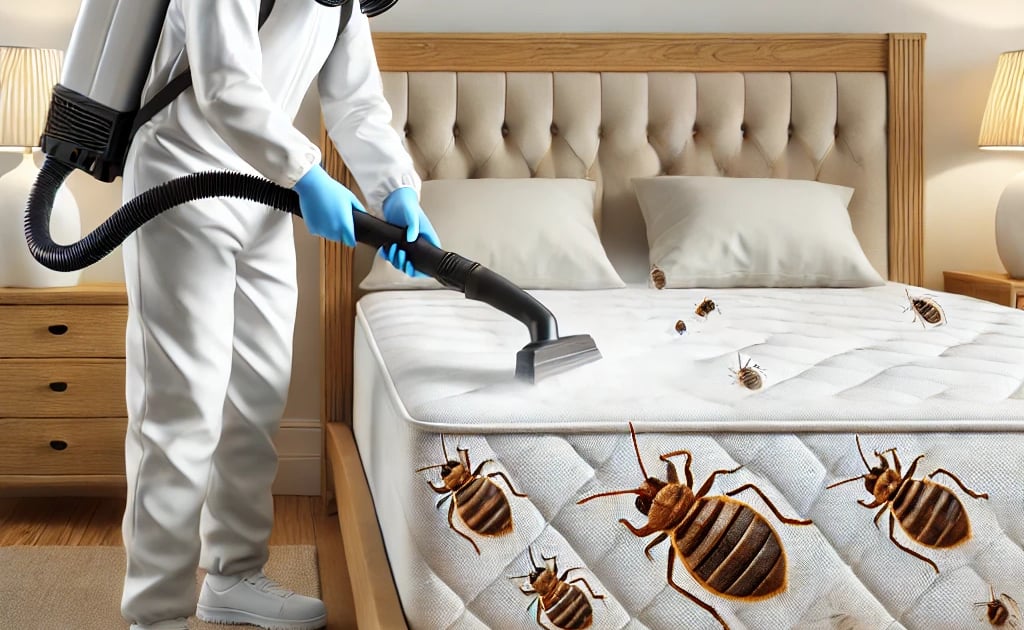Get Enlightened Concerning the Kinds of Bug Control Techniques and Their Benefits for Home Owners
Recognizing the numerous pest control methods offered to home owners is vital for effective parasite administration. From chemical and organic techniques to social and mechanical methods, each method presents one-of-a-kind advantages that can significantly affect both health and wellness and ecological safety. Home owners that are educated can make tactical selections that not only address bug issues but additionally improve the overall quality of their living setting. As we check out these methods even more, it ends up being clear that the decision-making procedure involves more than simply prompt outcomes; it touches on lasting sustainability and wellness. What aspects should influence these vital choices?
Chemical Insect Control Techniques
Chemical bug control approaches are an essential component of integrated pest administration approaches for house owners seeking efficient services to pest infestations. These techniques include the application of chemical substances designed to get rid of or hinder pests that threaten personal home, health, and comfort. Common chemicals used consist of insecticides, fungicides, herbicides, and rodenticides, each tailored to target particular parasites.
The main advantage of chemical insect control is its quick effectiveness; numerous solutions provide instant results, decreasing pest populaces significantly quickly. In addition, developments in chemical formulations have caused items that are a lot more ecologically pleasant and have reduced toxicity levels for non-target organisms when applied correctly.

Biological Bug Control Methods
Natural pest control methods have acquired prestige as property owners seek much safer and more sustainable choices to standard chemical strategies. Biological parasite control techniques make use of natural killers, bloodsuckers, or virus to handle bug populaces properly. This method is not only eco-friendly however likewise decreases the threat of damage to non-target types, including useful bugs and wildlife.
One of one of the most usual organic control methods involves presenting natural predators right into the setting. Ladybugs can be made use of to manage aphid populaces, while nematodes target soil-dwelling bugs like grubs. Additionally, parasitoids-- microorganisms that live on or within a host-- can be employed to manage particular bug varieties by laying eggs inside them, ultimately leading to their demise.
One more technique is using biopesticides, which are derived from all-natural materials such as minerals, plants, or germs (bed bug exterminator). These products can effectively target pests while presenting very little risk to humans and pets. Generally, biological insect control techniques give homeowners with a reliable methods of insect management that straightens with eco-friendly principles, promoting a much healthier living atmosphere while reducing dependence on synthetic chemicals
Mechanical Pest Control Approaches
Mechanical bug control strategies incorporate a range of methods that literally avoid or remove bugs without making use of chemicals. These strategies are especially advantageous for home owners seeking environmentally pleasant options while making sure the safety of their home.
One common approach is the use of obstacles, such as displays, traps, and webs, which avoid parasites from going into homes or details areas. For example, installing window displays can effectively maintain pests out, while using physical barriers around yards can deter larger bugs like rabbits or deer. In addition, mechanical traps developed for rats can record and get rid of these pests without the requirement for poisonous materials.
Another effective method entails the usage of like it brooms and vacuums to eliminate bugs straight from surface areas. Regular cleaning and maintenance can dramatically lower pest populations by getting rid of food sources and hiding areas. Utilizing tools like ultrasonic insect repellents can prevent various pests with noise waves that are undesirable to them but inaudible to human beings.
Cultural Insect Control Practices
Social insect control methods concentrate on customizing the setting and monitoring strategies to develop problems that are much less for pest invasions. These practices are fundamental in maintaining a balanced ecological community and reducing the reliance on chemical interventions. By altering agricultural methods, property owners can efficiently prevent parasites while advertising plant wellness.
One typical technique includes crop turning, which interferes with the life process of insects by altering the kinds of plants expanded in a details location (bed bug exterminator). This not just lessens pest populations but additionally enhances soil health. In addition, intercropping-- growing varied crops in closeness-- can puzzle bugs and decrease their ability to situate their favored host plants
Water administration is another crucial aspect of social techniques. Appropriate irrigation techniques can protect against standing water, which functions as a breeding ground for insects and other parasites. Maintaining cleanliness in and around the home, such as frequently getting rid of debris and food waste, can considerably lower bug destination.
Integrating these cultural practices right into a thorough pest administration method permits homeowners to produce an atmosphere that normally hinders pests, thus improving the performance of various other control approaches my latest blog post while promoting sustainable gardening and landscaping.

Integrated Pest Management Approaches
Integrated Pest Monitoring (IPM) stands for an alternative technique that integrates different techniques to successfully handle insect populations while lessening environmental effect. This method integrates biological, social, physical, and chemical techniques to attain sustainable insect control. By evaluating pest populations and their all-natural opponents, IPM highlights tracking and determining pests before implementing control measures.
Among the core concepts of IPM is using thresholds, which establish the degree of bug activity that necessitates intervention. This makes sure that treatments are applied just when required, lowering the reliance on chemical pesticides. Organic control techniques, such as presenting natural killers or bloodsuckers, operate in combination with cultural techniques like crop turning and habitat adjustment to interrupt pest life process.
Additionally, IPM urges making use of least-toxic chemical alternatives when intervention is essential, prioritizing items that position marginal risk to non-target microorganisms and the setting. For house owners, adopting IPM comes close to not just improves the efficiency of insect monitoring but likewise advertises a healthier living atmosphere, cultivating biodiversity and decreasing chemical direct exposure. Ultimately, IPM equips homeowners to make educated choices that balance insect control with eco-friendly obligation.
Conclusion
Finally, comprehending the different bug control approaches encourages homeowners to make informed decisions pertaining to pest management. Each approach-- chemical, biological, mechanical, cultural, and integrated insect administration-- supplies distinctive benefits that satisfy different needs and preferences. By choosing suitable approaches, home owners can effectively manage pest populations while reducing health dangers and ecological effects. This educated technique adds to a much healthier living environment, promoting overall well-being for families and pets alike.
Comprehending the numerous parasite control techniques readily available to home owners is crucial for efficient parasite administration.Chemical parasite control techniques are best termite inspection a vital element of incorporated insect monitoring techniques for home owners seeking efficient solutions to pest invasions. On the whole, biological bug control techniques supply homeowners with an effective methods of pest administration that straightens with ecological principles, advertising a much healthier living environment while minimizing dependence on synthetic chemicals.
Cultural parasite control practices focus on changing the environment and management methods to develop conditions that are less helpful to pest problems.In conclusion, comprehending the numerous parasite control techniques encourages homeowners to make educated choices regarding pest administration.